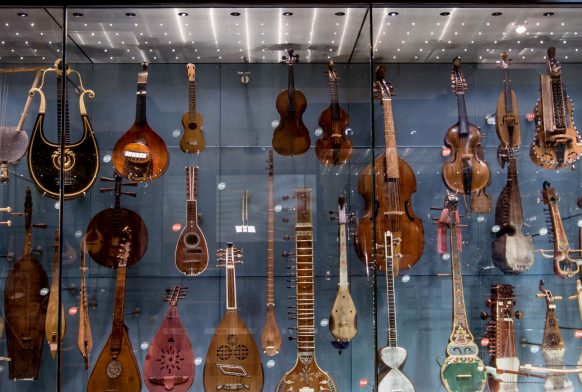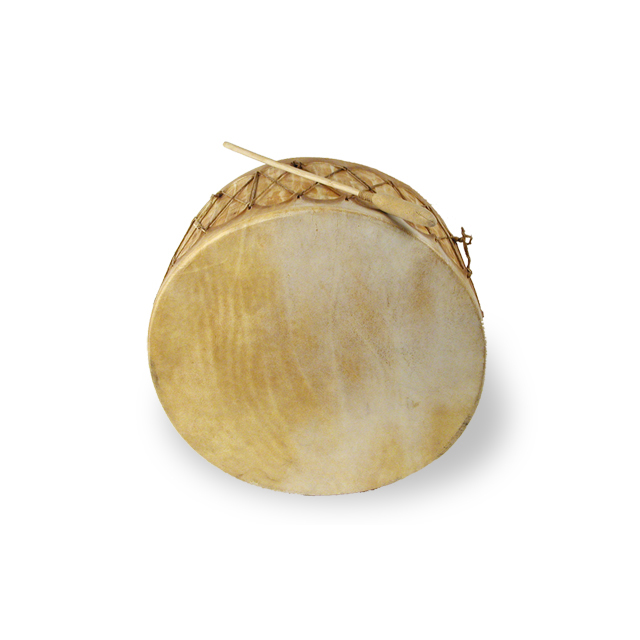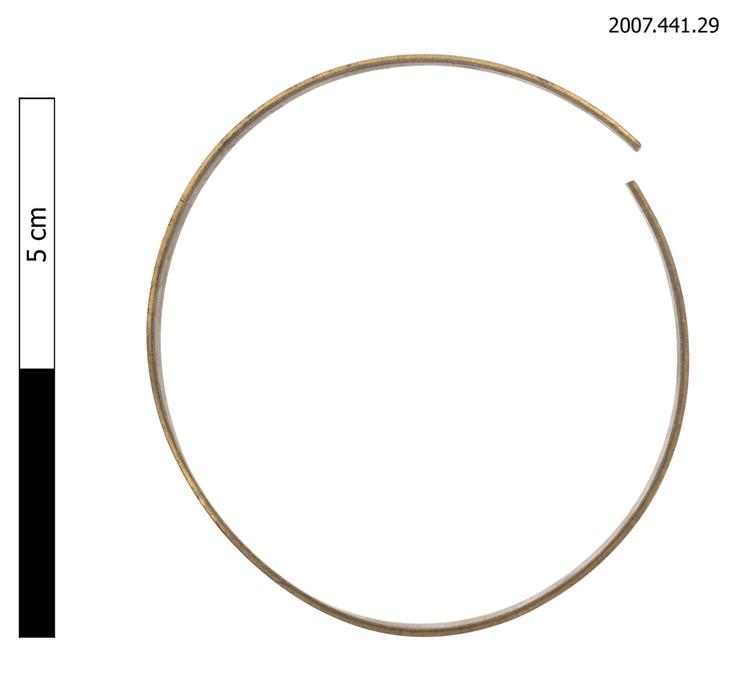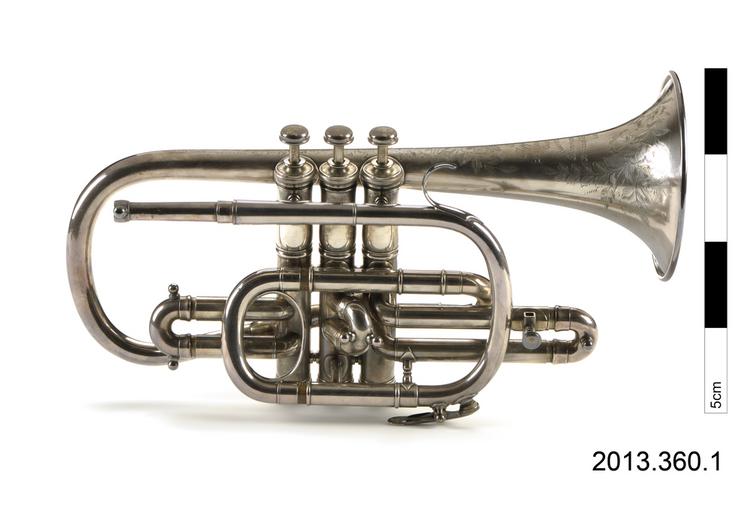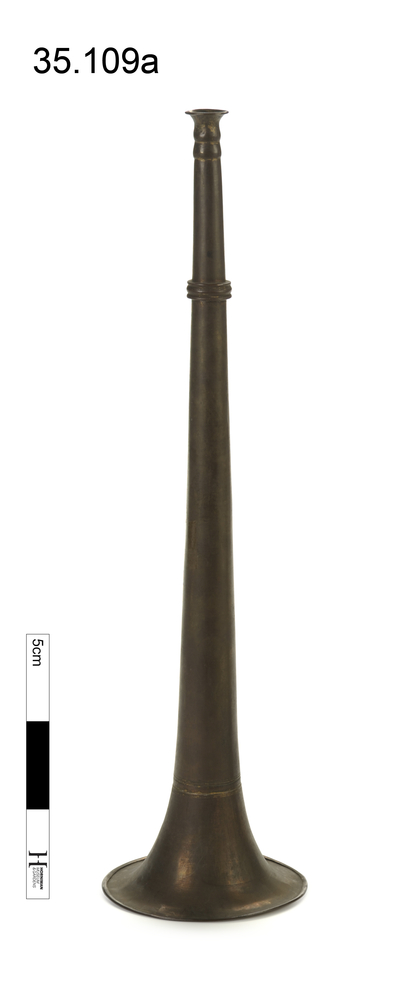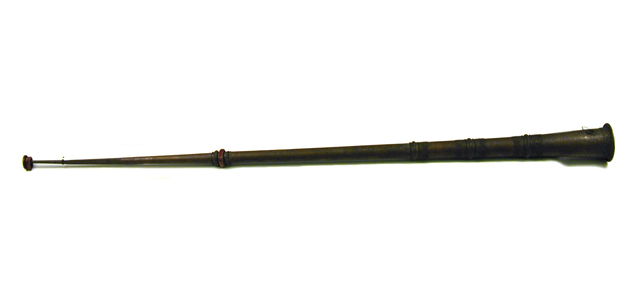
Dung-chen, long trumpet. One of a pair with US 563. Evenly conical bore. In three joints, which can be collapsed telescopically. Brown metal (copper?) with yellow metal (brass?) ferrules, mouth pipes and mouthpiece. Decorative ferrules around sockets of lower two joints, mid-way along the bell joint and around the bell rim. Two red fabric bands, one on top joint and one on middle joint. Seams visible along underside of lower two joints. A small metal shield is attached near the bell with a ringlet. Mouthpiece is not removable and has a flat rim. Cup of mouthpiece is slightly curved.
The dung-chen is a trumpet associated with the monastic traditions of Tibetan Bhuddism. It is used for morning and evening calls from the roofs of monasteries, normally heard in pairs, which often alternate with the rgya-gling, a large conical oboe also well suited to outdoor playing. The length of the dung-chen makes it most suitable for performing low drone notes, and Tibetan performance traditions usually centre on the three lowest available pitches. Players do not usually aim for an even tone, but concentrate more on the articulation of the beginnings and endings of notes. These are often specific to individual monasteries, where they are recorded in notated repertoires known as dung-tshig.



